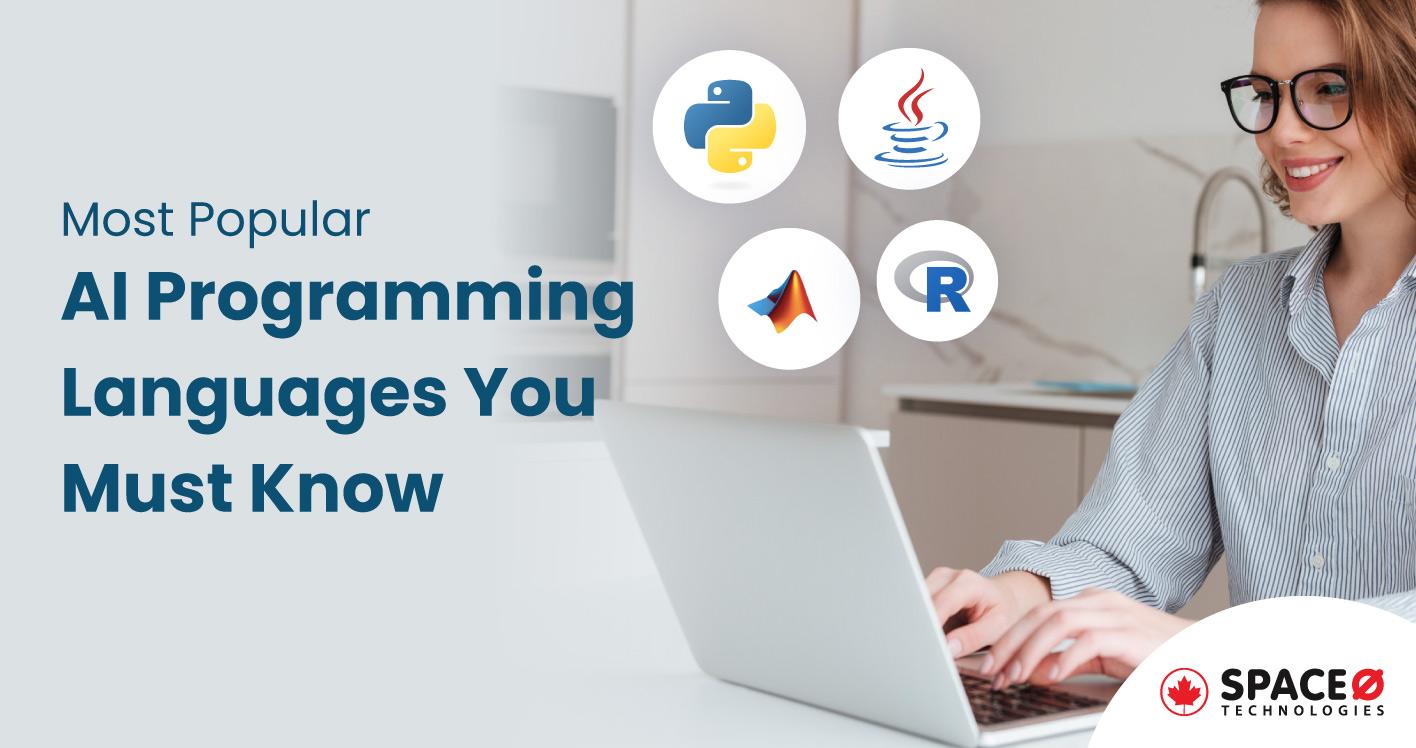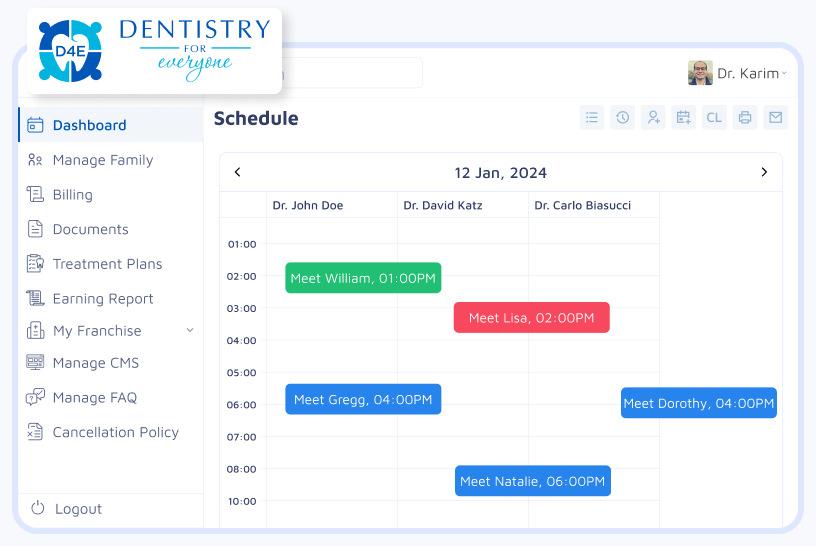
8 Most Popular ML and AI Programming Languages to Use in 2025
As the influence of AI development is increasing today, businesses and developers are heading ahead to develop AI-powered software or mobile applications.
Developing an AI-powered is a complex task but choosing the right AI programming language is a more tedious task. Depending on your requirements, you have to choose an AI programming language that helps you to develop scalable, full-functional, and reliable AI applications.
Being an experienced software development services provider, we have experience in developing and deploying 300+ custom software and mobile applications.
We know the process of developing AI software applications that includes steps like defining problems, data collection and preparation, algorithm selection, training AI models, development and integration, and deployment of your AI software.
That’s why we have curated this guide on the top AI programming languages to choose from in 2023 for your AI project development. So, let’s get started.
Table of Contents
8 Best Programming Languages Used for AI Software Development
Here is the table that describes programming languages for AI development. Check the following table to get an overview of each programming language.
| Icon of AI Programming Languages | Programming Language | Year Introduced | Number of Developers | Popular Applications |
|---|---|---|---|---|
 | Python | 1991 | Over 8 million |
|
 | R | 1993 | Over 2 million |
|
 | Java | 1995 | Over 9 million |
|
 | C++ | 1985 | Over 3 million |
|
 | Julia | 2012 | Over 1 million |
|
 | MATLAB | 1984 | Over 4 million |
|
 | Prolog | 1972 | Unknown |
|
 | Go | 2009 | Over 1 million |
|
As you have gone through each programming language, let’s learn about these programming languages for AI development in detail.
Python
Python is a high-level, dynamic, and general-purpose programming language that allows developers to create web, mobile, desktop, and AI-powered applications. Due to its simplicity, readability, and ease of use, the Python programming language is widely used for developing AI and machine learning applications. Python has multiple famous frameworks and libraries, such as Tensorflow, Pandas, SciPy, sci-kit-learn, Keras, and PyTorch. All these libraries help in the rapid development of your AI project. However, here are the core features of the Python programming language.
Key Features of Python Programming Language:
- Simple and easy to understand syntax
- Support to extensive libraries for development
- Dynamic typing to change data at runtime
- Efficient memory management to reduce the work of developers
Looking to Hire Python Developers for Your Project?
As a leading AI software development company, we have a team of experienced and skilled Python developers.

R Language
R programming language provides an environment for statistical computing and graphics. This programming language is developed by R Foundation for Statistical Computing. The core purpose of the R programming language is to use it for data manipulation and analysis, machine learning, statistical modelling, and data visualization. A few of the most popular frameworks and libraries of R programming language are dplyr, ggplot2, caret, tidyr, magrittr, TensorFlow, Keras, and Sparkly. Next, let’s check the features of Artificial Intelligence programming languages.
Key Features of R Programming Language:
- Straightforward and intuitive syntax
- Cross-platform compatibility to work across platforms
- Reproducibility to replicate your work
- Extensive graphical facilities for data analysis
- Efficient data handling to provide wide ranges of calculations
Java
Java is a high-level, object-oriented, and second-oldest programming language that enables developers to create dynamic, robust, and scalable applications. This programming language is used for creating mobile, web, and enterprise software development. Deeplearning4j, Apache Mahout, Weka, Encog, and DL4J are a few of the frameworks and libraries useful to develop AI applications. Let’s learn the features of the Java programming language for AI development.
Key Features of Java Programming Language:
- Object-oriented programming
- Platform independency to run Java apps on any platform
- Garbage collection for automatic memory management
- Multi-thread support for executing concurrently within a single platform
- Large standard library to offer a wide range of tools for developers
- Portability to transfer Java programs from one to another platform
C++
C++ is one of the most popular programming languages known for its high-performance application development. This is a low-level programming language which means it’s not suitable for the more theoretical side of software development. But, C++ programming language has the proper capability to handle and build AI models in the production environment.
Here are the key features of the C++ programming language.
Key Features of the C++ Programming Language:
- Supports parallel programming to write programs
- Object-oriented and supports data abstraction
- Memory management to control over programs
- Cross-platform support to run and deploy AI apps
Julia
Julia is a high-level and high-performance programming language specifically developed for numeric and scientific computing, data science, and machine learning. This programming language is suitable for data science, scientific computing, and machine learning application development. Overall, Julia is a combination of high-performance, dynamic, expressive data, multiple dispatches, interoperability, and a large package ecosystem.
Key Features of Julia Programming Language:
- Dynamic typing and introspection to write easily read and write code
- Multiple dispatch programming to support dynamic execution of code
- Built-in support for distributed computing to scale up computation
- Large and growing packages to create multiple types of app development
MATLAB
MATLAB is a high-level programming language known for technical computing which includes numeric analysis, data analysis, and visualization. This is a powerful and flexible programming language that allows developers to create rich data visualization, large ecosystem, and matrix operations optimizations. Signal Processing, Control System, Optimization, and Deep Learning Toolbox to provide a wide range of functionality of MATLAB programming language. Let’s learn about the features of MATLAB.
Key Features of MATLAB Programming Language:
- Interactive environment for exploring and analyzing the data and creating visualizations
- Rich data visualization to create 2D and 3D plotting, image processing, and animation
- Optimized for matrix operations numerical analysis and scientific computing
- Integration with other tools, such as C/C++, Python, and Java
Prolog
A declarative programming language that uses a form of symbolic logic. This programming language is specially designed for tasks like natural language processing and knowledge representation. Prolog easily handles symbolic data and is a popular choice for developing expert systems. This expert system is a combination of computer programs that mimic the decision-making behaviour of humans in a particular domain. Basically, Prolog is used to create natural language processing, such as language translation and speech recognition. Let’s learn about the core features of the Prolog programming language.
Key Features of Prolog Programming Language:
- Declarative programming to create NLP applications
- Logic programming to define relations and rules using predicates
- Built-in search to explore solution space
- Pattern matching to match input patterns and rules and factors of program
- Interoperability to integrate Prolog modules in other systems
GoLang
Go is a programming language to develop scalable and reliable software applications and systems. Go is an alternative to Java and C++ programming languages. This programming language makes it easy to code large-scale software applications with its key features. Over the short period, Go has gained very much popularity for developing microservices, cloud applications, and system-level software. Due to its simple syntax, powerful concurrency features and in-built garbage collection, it becomes easy to develop efficient and scalable systems.
Key Features of Go Programming Language:
- Concurrency that supports writing programs that efficiently perform multiple tasks
- Fast compilation to quickly test and deploy the code of application
- Built-in testing making it easy to test and run tests of application
- Strong typing ensuring that errors are caught at compile-time only
So these are the 8 programming languages that help in AI development. Moving further, let’s learn how you can pick the right programming language for your project development.
Comparison of Top AI Programming Languages to Give You a Better Understanding
Here is a detailed comparison of the best AI programming languages.
| Programming Language | Ease of Use | Speed | Scalability | Security | Performance |
|---|---|---|---|---|---|
| Python | Easy | Moderate | High | Good | Moderate |
| R | Moderate | Moderate | Moderate | Good | Moderate |
| Java | Moderate | Fast | High | Good | High |
| C++ | Difficult | Fast | High | – | – |
| Julia | Moderate | Very fast | High | Good | Very high |
| Lisp | Difficult | Moderate | Moderate | Poor | Low |
| Prolog | Difficult | Moderate | Moderate | Poor | Low |
| MATLAB | Moderate | Moderate | High | Good | Moderate |
| Swift | Moderate | Fast | Moderate | Good | High |
| Go | Moderate | Very Fast | High | Good | Very High |
How to Choose the Right Programming Language for Your AI Project
You must be looking to choose the right AI programming language. Using the right programming language helps in efficient development, increased performance, improved accuracy, better scalability, and access to use machine learning libraries and frameworks. Here are the ways to choose the right AI programming language for your project development.
- The type of project you want to develop significantly impacts the programming language you choose
- The complexity of your AI project like features, design, functionalities, and other third-party integration
- The security you want for your AI application when it gets live on the public domain
- The time to market your AI software application
- The type of performance you want for your application whether average, moderate, or high-level
- Libraries and frameworks you would require to build your AI application faster and more efficiently
- Scalability you want for your AI application for the future requirements
- The community support to get wealthy access of knowledge, support, and resources as you work for your project development
Comparing each AI programming language based on the above criteria helps you to choose the programming language for your project development. As programming language plays an important role in the whole development cycle, it’s important to invest time to research and finalize a proper technology stack for your AI project development.
As a leading software development company in Canada, we have successfully developed 300+ custom software and mobile solutions. Check out some of our few software solutions developed by us.
Recent Software Solutions Developed by Us
Want to Hire AI Programmers for Your Project?
Contact us today. Describe your requirements to our technical consultants. Hire our experienced AI developers for your project development.
Are you still looking for information about AI programming languages? Check the following section of the FAQ to resolve your doubts.
FAQ About AI Programming Languages
Why is Python the most popular programming language for AI development?
Here are the reasons why Python is the most popular programming language.
- Several AI-specific libraries
- Interpreted language
- Large community support
- Scalability
- Cross-platform compatibility
Which is the best programming language for AI?
There is no specific answer to this question. Choosing the best programming language for AI development depends on several factors, such as the type of AI application you want to develop, the size of your project, flexibility, scalability, and performance you want for your application.
Which programming languages are used for Machine Learning?
Here is the list of programming languages that help in machine learning development.
- Python
- R
- C++
- Julia
- Scala
Let’s Develop Your AI Project Using the Right Programming Language
Select the Right AI Programming Language for Your ProjectIn this listing blog, you learned about the different popular AI programming languages. Let’s recall the different sections you have gone through within this blog post.
- Top AI programming languages
- Comparison of the best AI programming languages
- Description and features of each programming language
- How to choose the right AI programming language
So, this is all about this blog post. If you are looking to develop an AI-powered software application, get in touch with us. We have a team of AI software developers who are talented and skilled to develop scalable and reliable software applications. So far, we have 100+ satisfied clients worldwide. Let’s connect to discuss your AI project requirements.
Editor's Choice

Top 9 AI Software Development Companies [A Curated List]

8 Most Popular ML and AI Programming Languages to Use in 2025

How Much Does It Cost to Develop AI Software Using OpenAI? [A Complete Guide]
All our projects are secured by NDA
100% Secure. Zero Spam
*All your data will remain strictly confidential.
Trusted by


Bashar Anabtawi
Canada
“I was mostly happy with the high level of experience and professionalism of the various teams that worked on my project. Not only they clearly understood my exact technical requirements but even suggested better ways in doing them. The Communication tools that were used were excellent and easy. And finally and most importantly, the interaction, follow up and support from the top management was great. Space-O not delivered a high quality product but exceeded my expectations! I would definitely hire them again for future jobs!”

Canada Office
2 County Court Blvd., Suite 400,
Brampton, Ontario L6W 3W8
Phone: +1 (437) 488-7337
Email: sales@spaceo.ca






